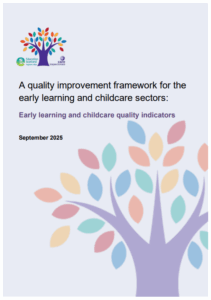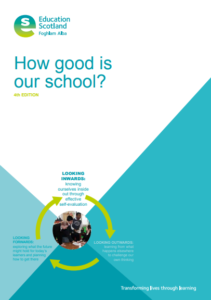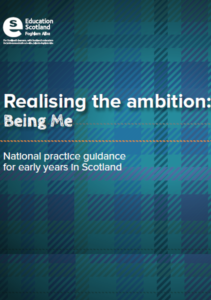p77
Support my understanding and use of positional language within everyday experiences and through activities such as role-play, board games, digital technologies and programmable toys.
p78 & 79
6.5 Digital technology and the young child
The key to all successful early learning as discussed previously in this guidance are the experiences, interactions and environments we provide for our children. Rapid developments in digital technologies at home and outside, are everywhere. They are changing our habits and, in some cases, making our lives easier and more enjoyable. Mobile phones; tablets; washing machines; televisions; automatic doors; online shopping and “Smart” homes are a few examples of interactive technologies babies and young children may encounter as they grow.
Children can use any resource to promote their learning in at least two different ways. They can learn about a resource, and then use this knowledge to learn with it.
For example, children can learn about how to use a paint brush and then use their knowledge to learn what happens when they use paint, why does it drip down an easel, what happens when you mix colours together and so on.
It’s useful to think of children learning with digital technologies in the same way learning about digital technologies involves developing children’s understanding of the uses of information and the effect this has on a child’s learning. For example, this may be learning how to programme a toy or using a digital camera or using a smartboard.
However learning with and through digital technologies can promote and support other learning. For example working out how to park a programmable car in a particular place or using a digital camera to record what happens when you pour substances down a pipe.
An emphasis on learning with and through digital technologies, rather than about digital technology will best enhance children’s early learning.
The child’s view
Children learn through observations, and their attitudes to digital technologies often mirror their family members’ behaviours. We see gaps in the day filled through the use of digital technologies to keep babies and children occupied. Therefore, babies and young children’s engagement with digital technology does not always result in developing digital literacy skills or result in effective learning. High quality interactions with others is key when learning how to use them; guided interactions from an adult when learning through them; and; when learning about them. Importantly, there is a need to constantly evaluate their purpose and be mindful that digital technologies are not dominant in a young child’s life.
Effective use of digital technologies offers an engaging experience for babies and young children. It can address barriers to learning and improve access for children with additional support needs. Applications (apps), tablets, digital cameras, measuring equipment, video calls and voice chats are readily available. Children thrive when they ask, imagine, plan, create and interact with the world around them.
Our role
Digital technologies provide opportunities for us to design a unique learning spaces for the children. Bringing resources and experiences virtually into the setting can lead learning well-beyond what was originally planned For example, in response to a children’s interest in sharks, digital technology can extend learning through watching how real sharks move under the sea. Children then get a better understanding of size and speed and so on. This helps us draw on children’s own knowledge gained at home or outwith the setting to spark possible lines of development and a response to children’s own interests.
In ELC and early primary settings, sharing children’s learning through blogs, e-portfolios and email are common place and can be very helpful for parents to see what their child can do in a real time experience. The caveat to this is that programmes which support this can at times, be too restrictive, in not allowing the unexpected or special moments that children experience to be recorded. We therefore also need to ensure that this special information is communicated swiftly through giving the child control of how to communicate his/her achievement. It may be simply a drawing or a painting but to have the original given to the parent or a quiet word with the parent to tell of the special moment when they come to collect their child can be more precious than a photograph. Both systems have their place and are necessary.
In summary;
- children will vary in their experiences and awareness of digital technologies before coming to our settings,
- children are generally curious and want to explore different technologies,
- there is potential for the child to learn with, about and through digital technologies,
- practitioners need to use guided interaction and support for the young child in their exploration of digital technology,
- and, at all times digital technology should reflect the distinctive nature of young children and how they learn.



